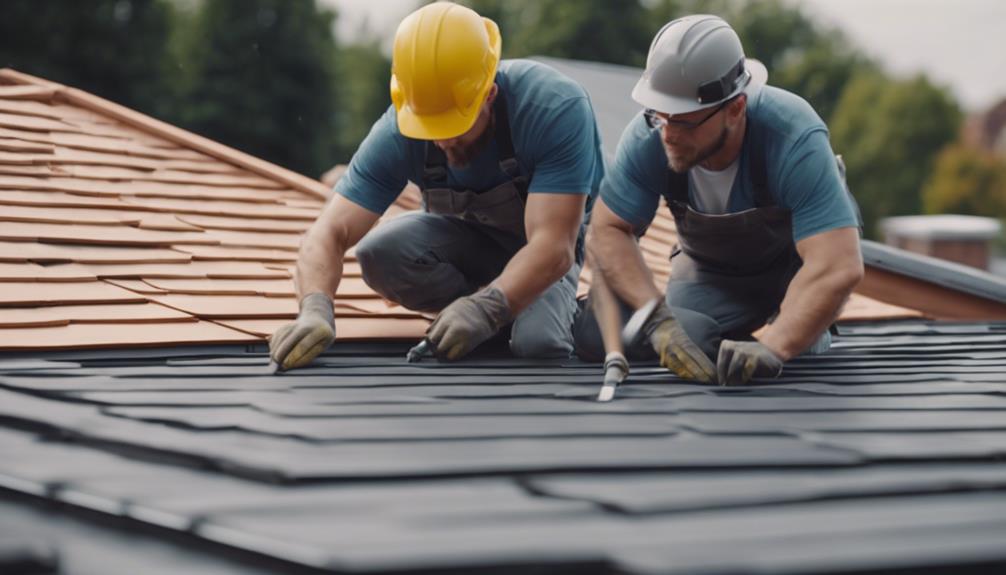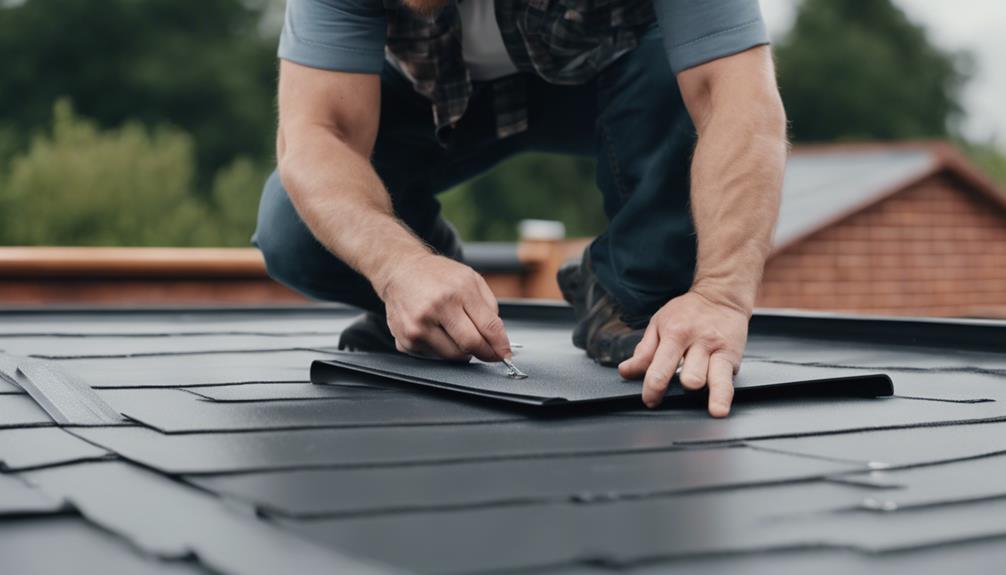How To Install Flat Roofing?
Keen attention to detail in flat roofing installation is the key to ensuring a durable and watertight roof - find out why precision is paramount.
Flat roofing installation is not just a matter of routine procedure; it is the cornerstone of a robust and reliable roofing system. The level of accuracy required in every step, from substrate preparation to flashing details, is paramount in ensuring the structural integrity and longevity of the roof.
A single misstep in the installation process can lead to costly repairs and potential water damage down the line. Understanding the intricacies of achieving precision in flat roofing installation is not only a skill but a necessity for contractors and property owners alike, as it directly impacts the overall performance and lifespan of the roof.
What Is the Process of Substrate Preparation for Flat Roofing?
Before applying the membrane for flat roofing installation, thorough substrate preparation is vital to guarantee a proper foundation for the roofing system.
A properly prepared substrate ensures that the roofing materials adhere correctly and provide a smooth, stable surface. This involves cleaning the surface of any debris, repairing any imperfections or damage, and ensuring the substrate is dry and level.
A poorly prepared substrate can lead to issues such as poor adhesion, bubbles, or wrinkles in the roofing material, which can compromise the roof’s integrity and lead to leaks or other damage. Proper substrate preparation lays the foundation for a successful flat roofing installation, ensuring the durability and longevity of the roofing system.
How Is the Membrane Application Process Carried Out in Flat Roofing?
Ensuring a meticulously prepared substrate sets the stage for a successful membrane application process in flat roofing installation. The membrane application process is a critical step that requires precision and attention to detail. Here are four key components of the membrane application process:
- Priming the Substrate: Before applying the membrane, the substrate must be primed to guarantee proper adhesion. This step helps create a strong bond between the substrate and the membrane.
- Cutting and Fitting the Membrane: The membrane should be accurately measured, cut, and fitted to the roof’s dimensions. Proper cutting and fitting prevent wrinkles and guarantee a seamless application.
- Adhering the Membrane: Using the appropriate adhesive, the membrane is carefully adhered to the primed substrate. Attention to detail during this step is essential to prevent any air bubbles or gaps.
- Rolling and Pressing: Once the membrane is in place, it is rolled and pressed to remove any air pockets and ensure a tight seal. This step guarantees a smooth and uniform application, enhancing the membrane’s performance and longevity.
Why Is Professional Installation of Flat Roofing Important?

Professional installation of flat roofing is important for ensuring the long-term performance and durability of the roof system. Hiring professionals with experience in flat roofing installations can make a significant difference in the outcome of the project. Professional installers have the expertise to properly prepare the deck, apply the membrane with precision, and make sure that all flashing details are correctly installed.
One key aspect of professional installation is the proper application of the roofing membrane. This involves precise measurements, cutting, and sealing techniques that are critical for the overall effectiveness of the roof. Additionally, professionals understand the importance of deck preparation, including addressing any underlying issues that may compromise the integrity of the roof over time.
Flashing details, such as around vents, chimneys, and edges, are critical areas that require expert installation to prevent water infiltration and potential leaks. Professional installers are trained to handle these details meticulously, ensuring a watertight seal that enhances the longevity of the flat roof.
How Can Property Owners Maintain Their Flat Roofing?
For property owners looking to maintain their flat roofing system effectively, understanding key maintenance tips is essential to prolong the roof’s lifespan and minimize potential issues. Here are some important tips to help property owners take care of their flat roofs:
- Regular Inspections: Conduct routine inspections to identify any signs of damage or wear early on. Look for cracks, bubbles, or tears in the membrane, as well as any loose flashing around vents or edges.
- Keep it Clean: Make sure that the roof is free of debris such as leaves, branches, and standing water. Clogged drains and gutters can lead to water pooling and potential leaks.
- Trim Overhanging Branches: Trees with branches hanging over the roof can cause damage during storms or from rubbing against the surface. Trim back any branches that pose a risk to the roof.
- Professional Maintenance: Schedule regular maintenance checks with a professional roofing contractor. They can provide expert care, identify issues early, and make sure any necessary repairs are done correctly.
What is Involved in the Final Inspection and Maintenance of Flat Roofing?

Precision in flat roofing installation directly affects the roof’s long-term performance and maintenance needs. A precisely installed roof is more likely to:
- Resist water infiltration, reducing the risk of leaks and water damage.
- Understand weather extremes, from heavy rains to high winds and temperature fluctuations.
- Require fewer repairs, as a well-installed roof is less prone to issues caused by poor workmanship.
- Extend the lifespan of the roofing system, providing better value over time.
Contractors and property owners must prioritize precision at every stage of the installation process to ensure a durable, reliable flat roofing system. This includes meticulous planning, adherence to best practices, and ongoing inspections to maintain the roof’s integrity and performance.
Frequently Asked Questions
What Are the Most Common Mistakes Made During Flat Roofing Installation?
Common mistakes during flat roofing installation can include improper membrane application leading to leaks, inadequate deck preparation causing structural issues, and poor flashing details resulting in water infiltration. Attention to detail and adherence to best practices are essential.
How Long Does a Flat Roof Typically Last Before Needing to Be Replaced?
A well-installed flat roof can typically last between 10 to 30 years before needing replacement. Factors affecting longevity include material quality, installation techniques, maintenance, and weather conditions. Regular inspections and timely repairs can help extend the roof’s lifespan.
Are There Any Specific Maintenance Tasks That Should Be Performed Regularly on a Flat Roof?
Regular maintenance tasks for flat roofs include inspecting for damage, clearing debris, checking seams and flashings, ensuring proper drainage, and addressing any ponding water. Scheduled inspections and timely repairs can extend the roof’s lifespan.
How Can Property Owners Prolong the Lifespan of Their Flat Roofs?
To prolong the lifespan of a flat roof, property owners should conduct regular inspections, promptly address any issues, keep the roof clean, guarantee proper drainage, monitor for leaks, and hire professional contractors for maintenance and repairs.
What Are the Most Common Issues That Can Arise With Flat Roofs Over Time?
Common issues with flat roofs over time include ponding water, membrane deterioration, flashing leaks, and clogged drains. Regular inspections, maintenance, and timely repairs can help mitigate these problems and extend the lifespan of the flat roof.